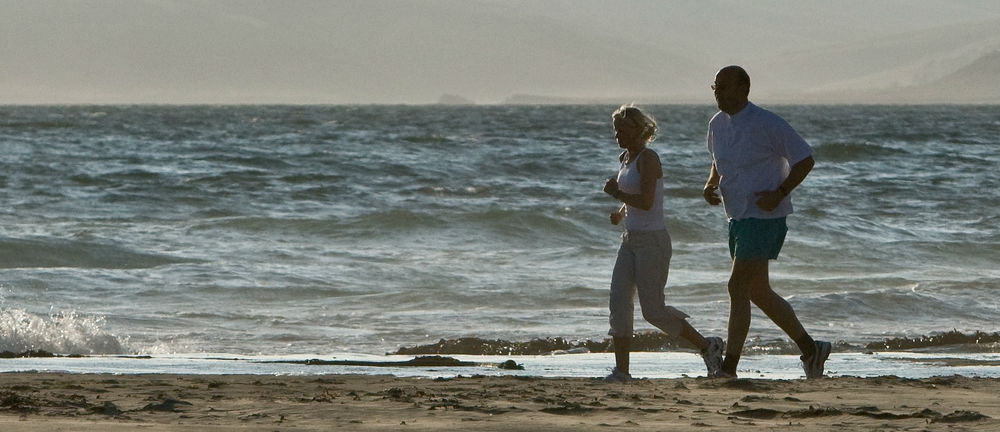





Dodgy Knees
Posted by
Danae
,
13 May 2015
·
6,087 views
arthritis cartilage knee joints long distance running walkers knee pain bone spurs
 Anyone on a trip to the Austrian Alps will notice a large proportion of elderly walkers striding up the mountain, and fewer striding down. Taking the cable car down the mountain after walking up is something older people with dodgy knees go in for, since walking down steep paths can be more painful.
Anyone on a trip to the Austrian Alps will notice a large proportion of elderly walkers striding up the mountain, and fewer striding down. Taking the cable car down the mountain after walking up is something older people with dodgy knees go in for, since walking down steep paths can be more painful.Many people will tell you that knee pain and arthritis in the knee joints are inevitable after middle age. The problem is that the cartilage that provides the padding in the knee wears out, and the bones start rubbing together, causing pain. Muscles also shrink in size by up to 40%, which means we lose strength. Losing this muscular support in later years makes us more likely to experience knee problems and to start to walk with bent knees, which is easier when the muscles are shorter and weaker, but makes us more likely to fall.
To make matters worse, the knee joint is one of the most complex; the design compromise is between mechanical complexity and enormous power. It is more likely to be injured than any other joint in the body. Injuries can be caused by sport that combines running, jumping and stopping with quick changes of direction such as squash, football and skiing, as well as by accidents such as the dashboard injury in car accidents. A serious knee injury often leads to severe arthritis if no measures are taken to prevent decline.
Signs of a dodgy knee joint include :
Stiffness, difficulty in bending the knee
Creaks and clicks
Heat around the joint
Swelling
Pain
Numbness
We sometimes hear people saying they used to go running but their knees can't take it any more. Distance running has often been seen as to blame for a busted knee. But recent studies have shown there is little evidence to support this view. The reason for the confusion is that runners have more bone spurs than sedentary people their own age. A bone spur is a bump or growth that forms as the body tries to repair itself by building extra bone. It typically forms in response to pressure, rubbing or stress that continues over a long period of time. However, it turns out runners do not suffer from the wearing away of cartilage that normally accompanies bone spurs. Active people have greater cartilage volume than couch potatoes and therefore are less likely to suffer from painful arthritis as the bones grate against each other. Knee arthritis is therefore less common in people who exercise.
In a 2013 study adult runners, including many aged 45 or older, had a lower incidence of knee osteoarthritis and hip replacement than age-matched walkers, with the adults who accumulated the most mileage over the course of seven years having the lowest risk - possibly, the study's author speculated, because running improved the health of joint cartilage and kept them lean as they aged. Long distance running seems to have a protective effect. The only caveat is if an injury is already present, in which case the RICE method is advocated (rest, ice, compression and elevation).
If we want ageless knees, the medical advice now is to :
1. Lose weight - increased rates of obesity have resulted in an epidemic of osteoarthritis.
2. Exercise - as long as this is combined with periods of warming up, cooling off and rest. The right exercise has both a preventive and curative effect.
Knee problems are not inevitable with age. Children and teenagers are just as likely to experience knee pain if they participate in activities that require repetitive movements.
If we take good care of our knees before there is a problem we can really help ourselves. Without healthy knees there is no independence, and our physical world shrinks. Time and effort spent on avoiding rickety joints pay huge dividends over the years. It is not true that knee problems are inevitable as we age - most people do not have knee pain. Let us take steps to ensure we stay pain-free.
www.staying-ageless.com










































